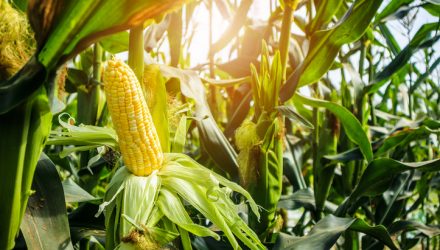Investors who are looking to diversify into agricultural commodities-related ETFs should consider the strong fundamentals that support underlying the markets and the longer-term relationships between commodity prices and equities.
On the recent webcast, Why Invest in Agriculture ETFs – Can Investments Grow in Bad Weather?, Jake Hanley, Marketing Director, Teucrium, pointed out that investors should look to grains exposure as part of a diversified portfolio because agricultural products are pervasive throughout the economy, population growth continues to fuel demand with an expanding middle class, and supply does not always meet demand.
Specifically, Sal Gilbertie, President, Chief Executive Officer, Chief Investment Officer and Founder, Teucrium, underscored the pervasive nature of agricultural products in the world economy. For example, corn is the number one global use for animal feed. Grains and sugars are important components for ethanol production, sweetener production, starch production and polymer compounds. The end products from agricultural commodities made be found in the industrial industry, cosmetics, healthcare and wood substitutes, among others.
Looking ahead, Hanley argued that population growth will further support fundamentals on the demand side, with a projected 8.5 billion world population by 2030 and 11.2 billion by 2100, which translates to about 78 million more people per year or almost twice the population of California. This means that the planet needs to set aside an additional 13.6 million acres of land to be put into production to accommodate the population growth per year.
Meanwhile, demand is also rising due to an expanding global middle class, especially in the emerging markets where they shift toward greater meat consumption, which requires high grain-based animal feed. In 2018, half the world reached middle class, and by 2030, the middle class is projected to dominate the global population.
However, Gilbertie pointed out that supply does not always meet this steadily rising demand, which has helped support price gains that are uncorrelated to traditional assets. During periods like 2007 to 2008, 2010 to 2011 and even more recently year-to-date, production has fallen short of demand, contributing to steady gains in corn prices.
Over the intermediate term, Gilbertie also argued that ethanol policy could further support the corn market. Ethanol requirements in the U.S. resulted in the doubling of corn production costs. U.S. is also pushing for increased ethanol usage in the current 2019 to 2020 crop year. Meanwhile, China is set to initiate ethanol standards in 2020 to further fuel its economic growth.
The changing supply and demand dynamic has helped grains and the broader commodities asset class exhibit lower or uncorrelated returns to traditional equity exposure. Specifically, wheat has shown a low historical correlation of 0.12 with the S&P 500 over the past 20 years, corn has a 0.13 correlation to equities, sugar has a 0.15 correlation to equities and soybeans show a 0.25 correlation. A zero reading reflects perfect non-correlation while a one reading reflects perfect correlation.
As a way to tap into the agricultural commodities, Teucrium offers a suite of ETFs including the Teucrium Corn Fund (CORN), Teucrium Wheat Fund (NYSEArca: WEAT), Teucrium Soybean Fund (NYSEArca: SOYB), Teucrium Sugar Fund (NYSEArca: CANE) and the broader Teucrium Agricultural Fund (NYSEArca:TAGS).
CORN tracks three futures contracts for corn that are traded on the Chicago Board of Trade, including 35% second to expire contracts, 30% third to expire contracts and 35% December following the third to expire. The various contract exposures help the fund limit the negative effects of rolling contracts, especially during a market in contango.
WEAT also tracks three futures contracts for wheat traded on the CBOT, including 35% second to expire contracts, 30% third to expire contracts and 35% December following the third to expire.
SOYB tracks three futures contracts for soybeans on the CBOT, including 35% second to expire excluding August and September; 30% third to expire excluding August and September; and 35% expiring in the November following the expiration of the third-to-expire contract.
Similarly, CANE includes three futures contracts on No. 11 sugar traded on the Intercontinental Exchange, including 35% second to expire, 30% second to expire, 30% third to expire and 35% expiring int he March following the expiration of the third-to-expire contract.
Lastly, TAGS is seen as a catch all, fund-of-funds ETF that includes exposure to CORN, WEAT, SOYB and CANE.
Financial advisors who are interested in learning more about the agriculture market can watch the webcast here on demand.








